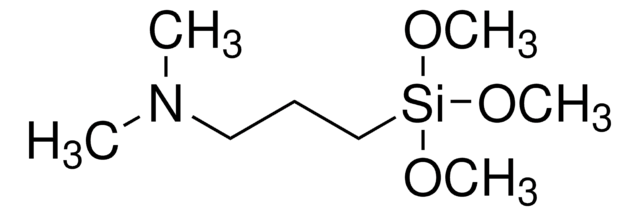440809
N-[3-(Trimethoxysilyl)propyl]aniline
Synonym(s):
Trimethoxy[3-(phenylamino)propyl]silane, (3-Anilinopropyl)trimethoxysilane, N-[3-(Trimethoxysilyl)propyl]aniline, [3-(Phenylamino)propyl]trimethoxysilane
About This Item
Recommended Products
form
liquid
Quality Level
refractive index
n20/D 1.506 (lit.)
bp
310 °C (lit.)
density
1.07 g/mL at 25 °C (lit.)
SMILES string
CO[Si](CCCNc1ccccc1)(OC)OC
InChI
1S/C12H21NO3Si/c1-14-17(15-2,16-3)11-7-10-13-12-8-5-4-6-9-12/h4-6,8-9,13H,7,10-11H2,1-3H3
InChI key
KBJFYLLAMSZSOG-UHFFFAOYSA-N
Looking for similar products? Visit Product Comparison Guide
General description
Application
signalword
Danger
Hazard Classifications
Aquatic Chronic 3 - Carc. 2 - Eye Dam. 1 - Muta. 2 - Skin Corr. 1B - Skin Sens. 1 - STOT RE 1
target_organs
Blood
Storage Class
6.1C - Combustible acute toxic Cat.3 / toxic compounds or compounds which causing chronic effects
wgk_germany
WGK 2
flash_point_f
230.0 °F - closed cup
flash_point_c
110 °C - closed cup
Choose from one of the most recent versions:
Already Own This Product?
Find documentation for the products that you have recently purchased in the Document Library.
Customers Also Viewed
Our team of scientists has experience in all areas of research including Life Science, Material Science, Chemical Synthesis, Chromatography, Analytical and many others.
Contact Technical Service






![Trimethoxy[3-(methylamino)propyl]silane 95%](/deepweb/assets/sigmaaldrich/product/structures/236/724/a4aa90e7-bf25-425f-9e44-cbc87ffac9fd/640/a4aa90e7-bf25-425f-9e44-cbc87ffac9fd.png)




